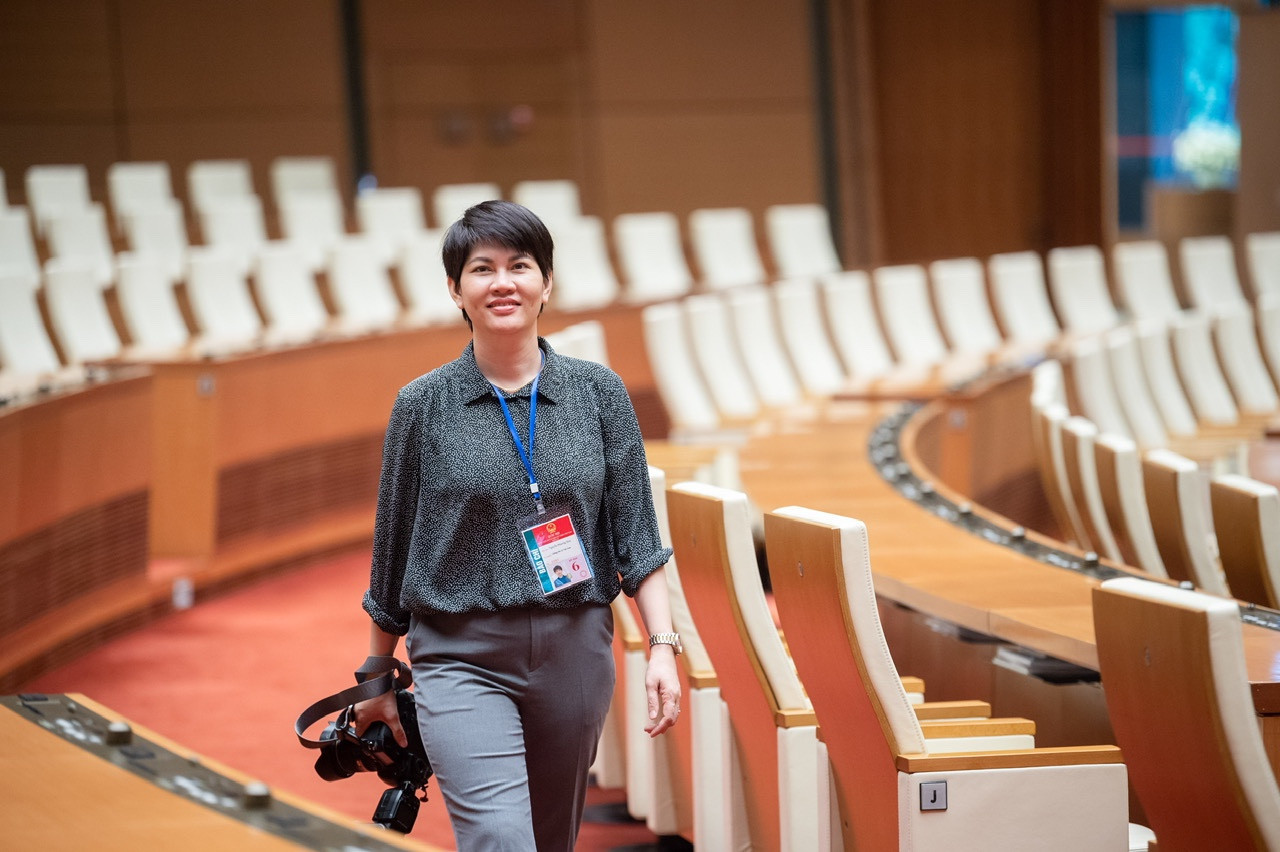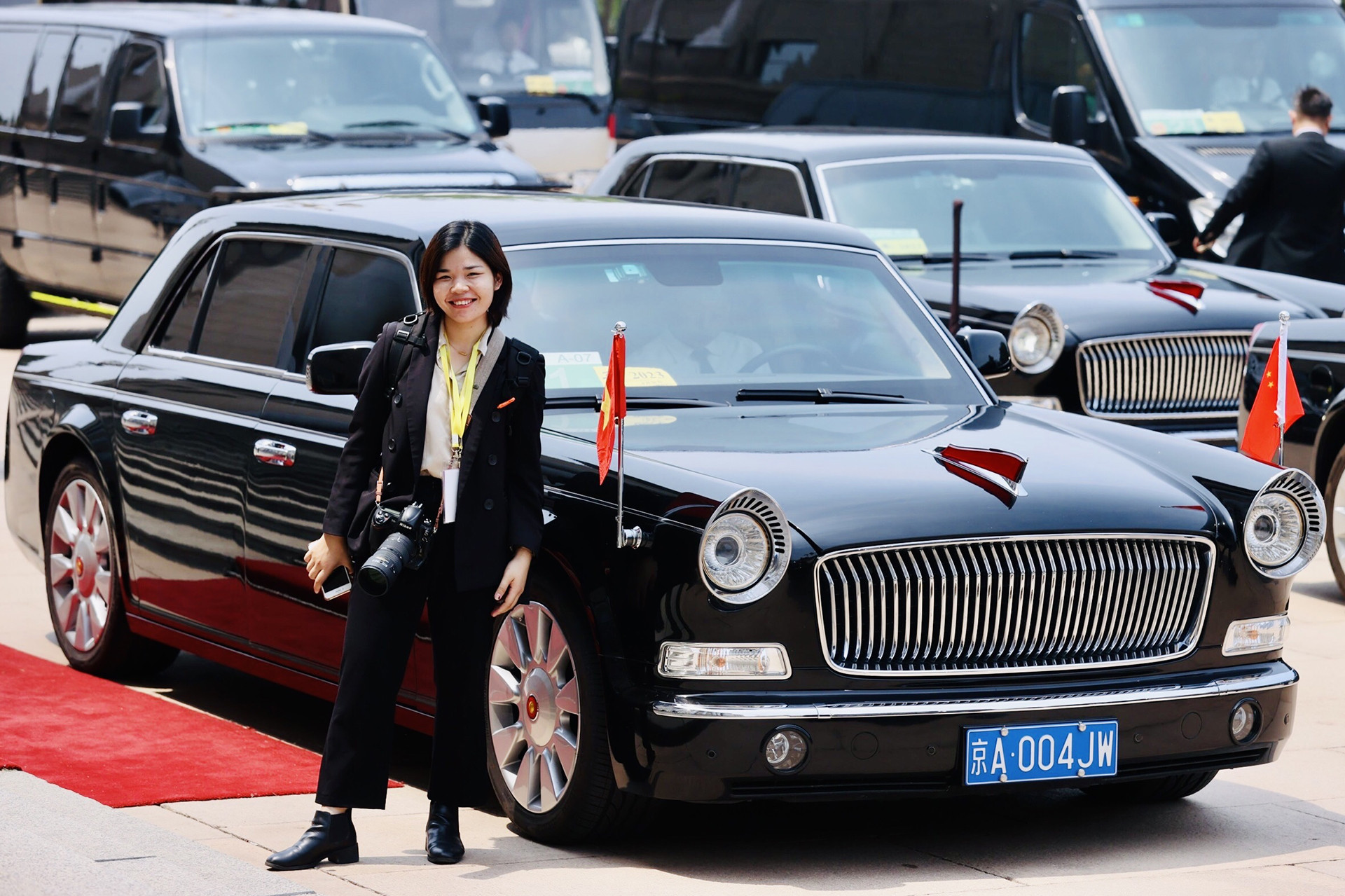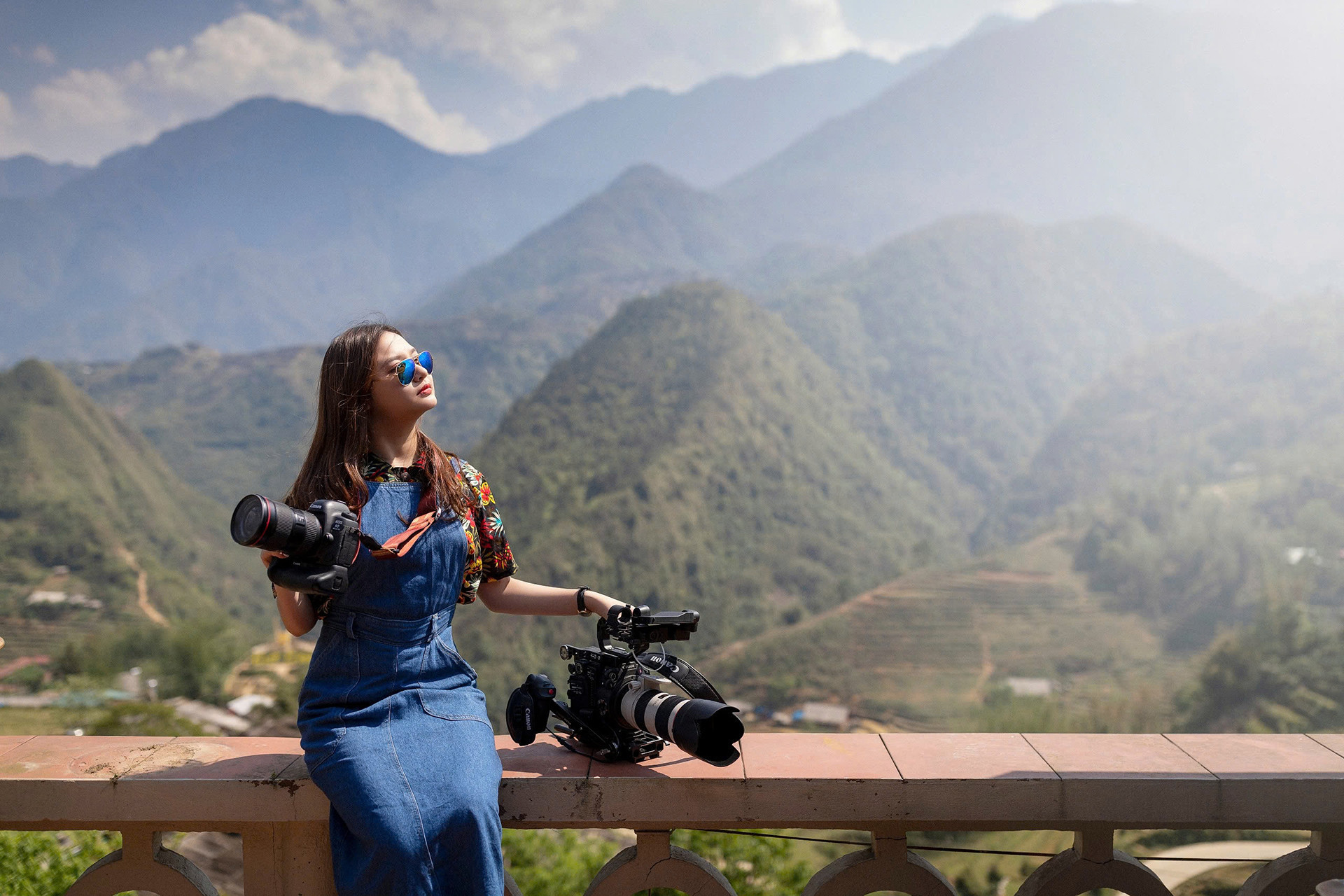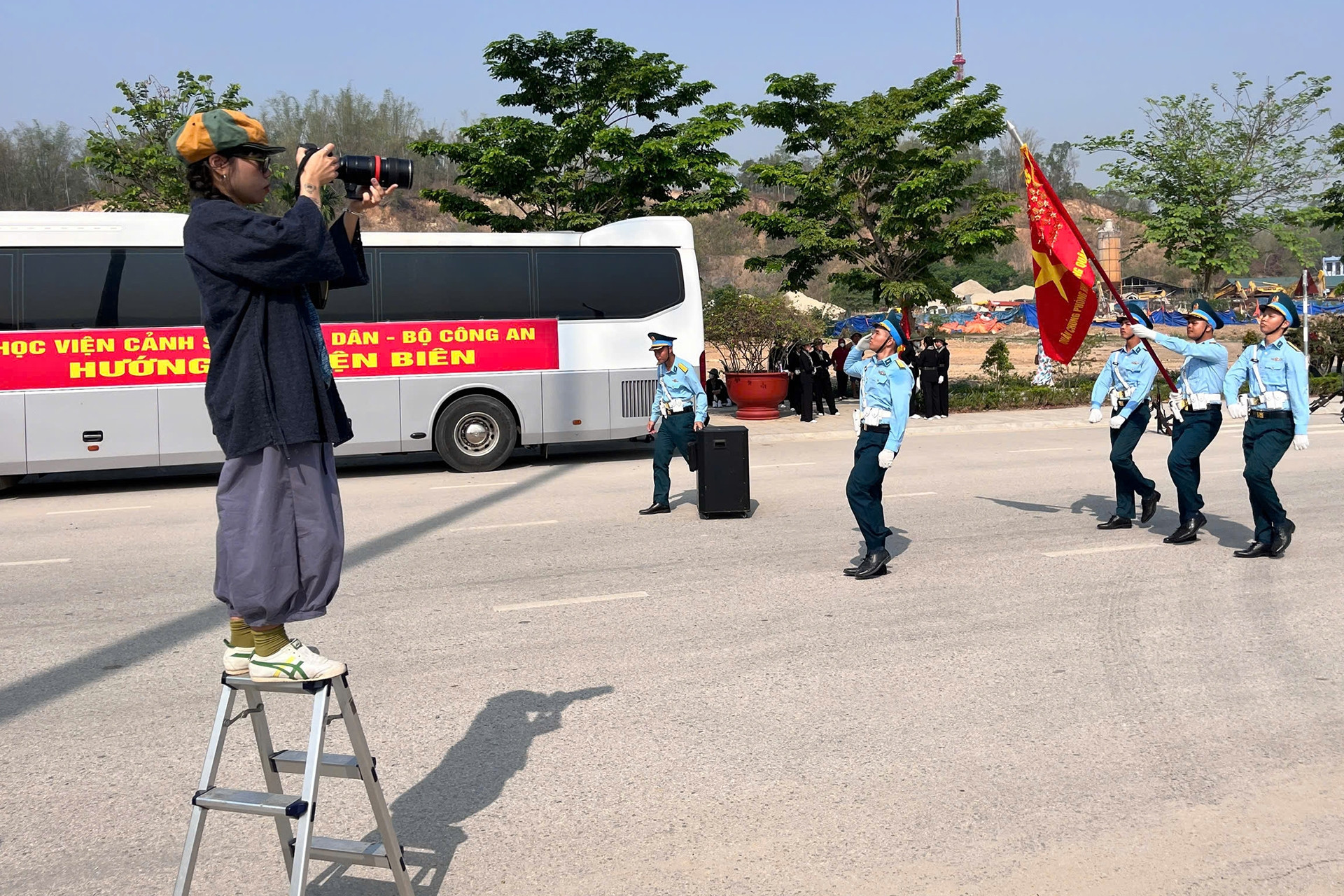In Vietnam’s journalism scene, female photojournalists remain a rare presence. Despite the challenges and enduring biases, they continue to push forward, appearing at every “hot spot” to capture powerful and unforgettable images.
Though significantly outnumbered by their male counterparts, female photographers have gradually gained respect for their relentless dedication and high-quality work. Once subjected to job postings that explicitly excluded women, they’ve since proven their value through daring fieldwork and compelling visuals. With creativity and a unique perspective, they contribute meaningfully to the industry.
To mark the 100th anniversary of Vietnam’s Revolutionary Press, VietNamNet spoke with four passionate female photojournalists whose commitment to the craft exemplifies courage and resilience.
The woman capturing Vietnam’s top political figures

Phuong Hoa, born in 1983 in Ninh Giang, Hai Duong, dreamed of becoming a reporter since high school, driven by her curiosity and desire to explore. Her academic excellence earned her a direct admission to the Journalism Faculty at the University of Social Sciences and Humanities in Hanoi, followed by a second degree in Photography from the Hanoi Academy of Theatre and Cinema.
After graduating, she joined the Vietnam News Agency’s Photo Department in 2007. Initially covering cultural and social beats, she later shifted to domestic and diplomatic affairs from 2010 onwards - a field requiring political acumen, unwavering focus, and considerable physical stamina.
Always carrying a heavy camera backpack, she races for prime positions to capture moments with high-ranking leaders. Her portfolio includes coverage of major political events like Party Congresses, National Assembly sessions, and state visits.
A standout memory was her assignment at the Non-Aligned Movement Summit in Azerbaijan, where nearly 200 countries were represented. She arrived three hours early to secure a spot among nearly 400 international reporters, eventually capturing an iconic image of a Vietnamese leader.
With nearly two decades in the field, Hoa stands by the belief that “a picture speaks louder than a thousand words.” She currently teaches photojournalism part-time at the Hanoi Academy of Theatre and Cinema.
Petite frame, powerful presence: Navigating international events

Hong Nguyen entered the field straight after graduating in 2016 with a photojournalism degree from the Academy of Journalism and Communication. Initially intending to take a break, she quickly joined The World & Vietnam Report, beginning a 9-year career chronicling Vietnam’s diplomatic activities.
Despite her small stature, Hong regularly finds herself jostling for position alongside taller foreign journalists. With over 10 kg of equipment strapped on, she often runs backward to photograph dignitaries without missing a shot.
Most recently, she covered the 80th Victory Day Parade in Russia, traveling through Kazakhstan, Azerbaijan, Russia, and Belarus. In Moscow’s cold and crowded conditions, she struggled to find a clear line of sight, but still managed to capture the proud moment Vietnam’s flag and soldiers marched through Red Square.
Reflecting on her work, she emphasizes the visual impact of photography: “A powerful photo conveys more than text can. It gives readers an instant, emotional connection to the story.”
Redefining the role of women behind the camera

Phuong Lam (real name Bui Thi Phuong), one of the youngest photo editors in Vietnamese media, initially studied digital journalism and later joined Tri Thuc Magazine. Her passion grew from internships to full-time assignments, bolstered by guidance from experienced mentors.
Despite physical disadvantages, she views her femininity as a strength, allowing her to access emotionally sensitive subjects like women, children, or celebrities. A memorable assignment during the COVID-19 pandemic involved helping a young soldier buy sanitary products for residents - a tender moment she captured to show humanity amid crisis.
Over four years, Lam has produced impactful photo essays, including a story about quadruplet sisters named Viet, Nam, Hanh, and Phuc. Reaching their remote village in Dong Thap required long bus rides, borrowed motorbikes, and the hospitality of kind strangers.
For Lam, the camera is a bridge to humanity. “AI can’t replace fieldwork, emotions, or the human eye,” she says. Her goal is to use photography to convey empathy and truth.
Small but mighty: A field reporter’s grit

Le Thi Thach Thao entered journalism almost by chance in late 2019. Though academically trained in photojournalism, she initially didn’t plan to work in media. But the job quickly became a calling.
At just 1.5 meters tall and carrying a 15 kg backpack, Thao has faced floods, storms, and pandemic zones. She first gained recognition during the COVID-19 outbreak in Chi Linh, Hai Duong, where she stayed for over a month, including Lunar New Year, to cover the crisis.
Her experiences also include storm coverage in Quang Ninh and flood aftermaths in Lao Cai. One emotionally taxing assignment left her in tears for days - a reminder of the mental toll of the job.
Still, she believes women photojournalists can thrive, especially in storytelling-focused features. “If you don’t love this job, you won’t survive it,” she says. “Work always comes first, even before personal matters.”
Hoang Ha